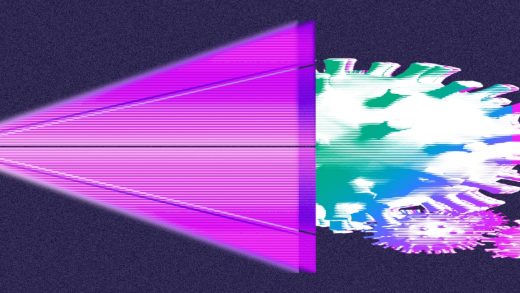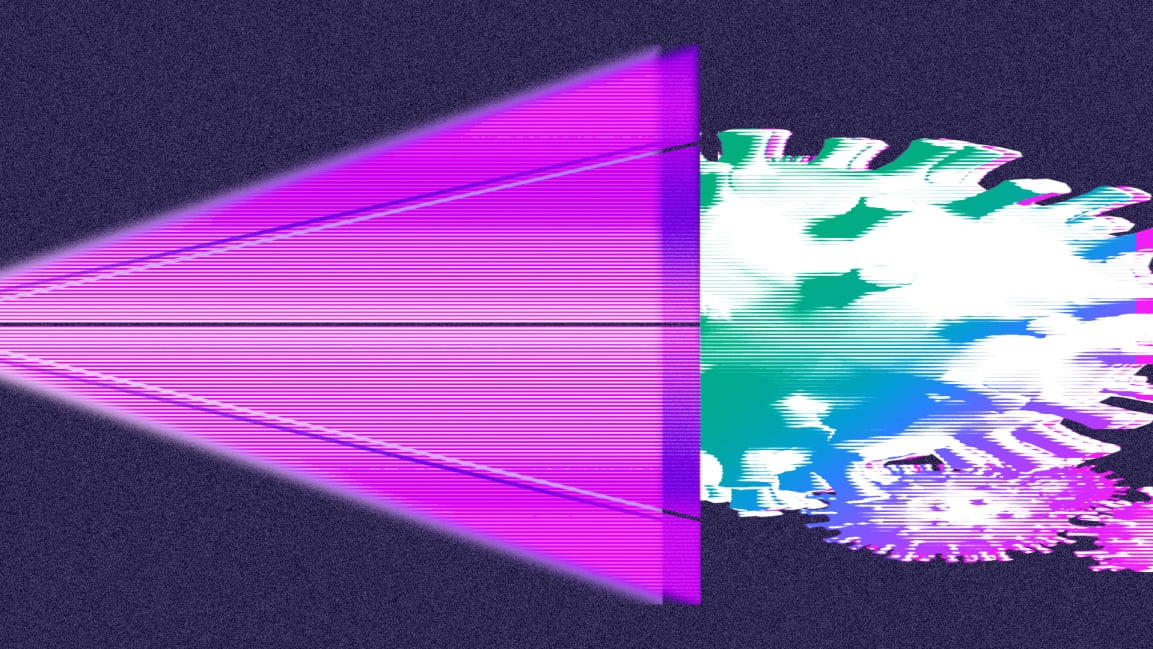Can UV light kill COVID-19? Experts advise caution
Airports and stores are starting to turn to ultraviolet radiation to disinfect surfaces as a means of curbing COVID-19’s spread. But this week three organizations devoted to supporting and developing standards for the lighting industry published a paper warning consumers and businesses against buying UV products that claim to guard against COVID-19.
In its letter, the National Electric Manufacturers Association (NEMA), American Lighting Association (ALA), and UL, an organization that develops standards for UV technologies, advised consumers to be aware of the risks involved with UV-C, a potent short-wavelength form of UV radiation that has historically been used to kill germs in medical settings. In particular, the organizations cited concern that overexposure to UV-C light could damage a person’s skin and eyes; UV-C devices that generate ozone could also be damaging to the lungs.
UV-C has gained attention as a potential way to disinfect heavily trafficked areas. Pittsburgh International Airport is employing cleaning robots with strong ultraviolet light to guard against COVID-19. Magnolia Bakery, a popular cupcake chain in Manhattan, has also installed a shorter wavelength UV-C portal that is could be effective at eradicating germs without harming human skin or eyes. Visitors are supposed to stand in it for 20 seconds before proceeding to the counter to place their order.
“That sounds like a good experiment!” says Adam Lilien, the global business development manager of connected technologies at UL. “I was being facetious.” Both he and Terry McGowan, the director of engineering at American Lighting Association, agree that the UV-C lighting the portal uses, a 222-nanometer wavelength, is promising, but research is still early.
“It doesn’t take much exposure from something like that,” says McGowan. “If it really is UV-C, people will be back and say, ‘My eyes itch and my skin is turning red—what did you do to me?’”
There are standards around what dosage 222 nanometer UV-C light can be safely used at in the presence of humans and it does not appear to affect eyes or skin. UV-C in general is already used in hospital settings for disinfecting rooms and equipment. Notably, the Centers for Disease Control and Prevention lists ultraviolet germicidal irradiation, the process for using UV-C to decontaminate, as one of the most promising methods of disinfecting air filtering face masks, such as the N95, for reuse. But using UV-C radiation to disinfect is not simple and requires lots of protocols to use safely. The radiation must be contained, often in a device. A common example of this is a UV-C box for sterilizing a cellphone. When UV-C light is used to disinfect a room, people must be cleared from the room before it’s turned on. Installing UV-C lights to irradiate a room is also a complicated process and must be appropriately calibrated by professionals in order to work effectively.
Most of the UV products advertised as effective against COVID-19 that McGowan and Lilien have seen online do not detail their strength or how they should be used. “There’s a concern, do they work or not? If you have something in your hands, like some of these wands that you see advertised where you wave them around and you’re trying to decontaminate a towel or a tabletop—you have no idea how long to hold it and how close to hold it and you don’t know if it’s effective enough,” says McGowan.
“And therein lies a conundrum: If it’s safe and you can see it, then it’s probably not effective. If it’s deactivating virus or bacteria then it’s harmful to humans,” says Lilien.
They argue that it’s unlikely that most of these devices on the market today are using 222 nanometer ultraviolet radiation, because the studies that suggest it may be both effective and safe even in the presence of humans are relatively recent. Researchers at Columbia University just published a report in June about its ability, at low doses, to kill coronaviruses. There are few companies that produce UV devices using the 222 nanometer wavelength, though they exist. While it can be used safely, The American Conference of Governmental Industrial Hygienists, which sets standards for UV radiation, recently warned that new lamps advertising UV-C 222 may put out a stronger dose than is currently recommended.
Lilien also wonders about the utility of something like a UV-C portal of the kind that’s been installed at Magnolia Bakery. “Is the theory that the person has it on their clothing, on their shoulders for example, and therefore by standing underneath it, it’s going to make them safe to be in contact?” He understands that such a device might make bakery patrons more comfortable. However, since COVID-19 is transmitted through droplets that enter the air through coughing, sneezing, or even speaking, it’s unclear how zapping someone’s clothing with UV-C light will help curb transmission.
This is not to say that Lilien and McGowan don’t see UV-C as a potentially helpful tool in mitigating the spread of COVID-19—especially for businesses. But they believe people should be using proven technology, installed by professionals.
Correction: A previous version of this story stated that there were not standards around the implementation of UV-C 222 devices. The American Conference of Governmental Industrial Hygienists sets standards for every nanometer wavelength of UV radiation.
(27)



